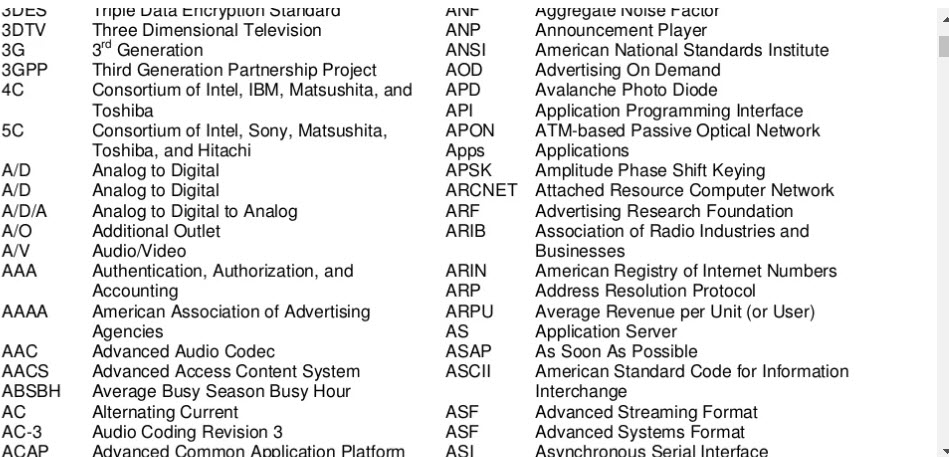Back in the early 90s I was hired as a B2B account manager at McCann-Erickson, NY to work on the trade advertising for AT&T. I would drive from NYC to Bridgewater, NJ two or three days a week meeting with product marketing, product management and advertising managers on an array of technical services housed on the AT&T data network. Our targets were MIS and TCMs, short for Managers of Information Services and Telecommunication Managers. All working at Fortune 2,000 companies.
My job was to make technical ads but because I worked at McCann they had to look pretty and offer up creative flourishes. It was my job to gather information on the plumbing (data pipes) and intelligence (software and switches) and turn that into a brief for the creative teams. In order to do my job though, I had to learn the technical stuff. At the time, AT&T product management was filled with engineers and engineers loved acronyms. There was no one to throw me a life line in these meetings — the account executive nod was not an option. So, I began asking the engineers questions. First, what was the acronym, and second what did it do? I’m not sure I still have the acronym glossary on my hard drive but it did get to 20 or 30 pages. I kid you not.
Anyone can make ads. Not everyone can make good ads. Getting to strategy requires speaking the language of the makers. And speaking the language of the buyers. And it also means speaking the language of the ad makers. As I’ve said a zillion times, words are important. Do what you have to do to learn the buying and selling languages.
Peace.



